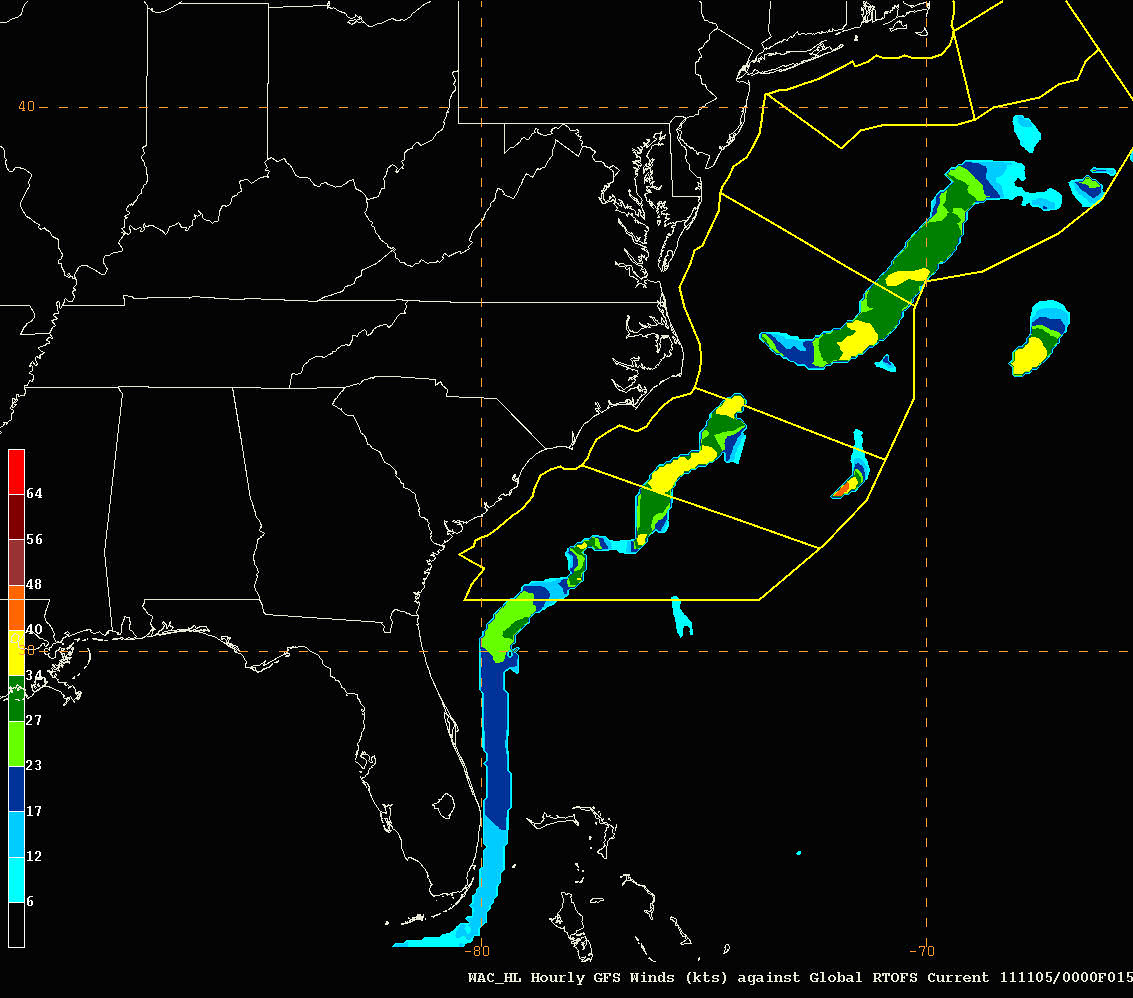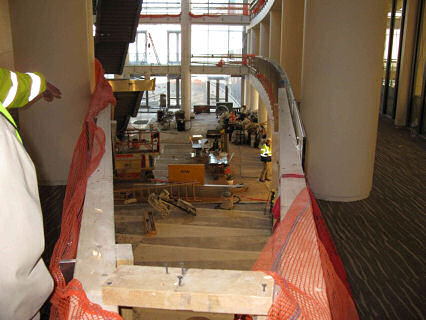
The forecast system is run once a day and produces a 6-day forecast using the daily initialization fields produced at the Naval Oceanographic Office (NAVOCEANO) using NCODA (Navy Coupled Ocean Data Assimilation), a 3D multi-variate data assimilation methodology. As configured within RTOFS, HYCOM has a horizontal equatorial resolution of 0.08° or ~9 km. The HYCOM grid is on a Mercator projection from 78.64°S to 47°N and north of this it employs an Arctic dipole patch where the poles are shifted over land to avoid a singularity at the North Pole. This gives a mid-latitude (polar) horizontal resolution of approximately 7 km (3.5 km). The coastline is fixed at 10 m isobath with open Bering Straits. This version employs 32 hybrid vertical coordinate surfaces with potential density referenced to 2000 m. Vertical coordinates can be isopycnals, often best for resolving deep water masses, levels of equal pressure (fixed depths), best for the well mixed unstratified upper ocean and sigma-levels (terrain-following), often the best choice in shallow water. The dynamic ocean model is coupled to a thermodynamic energy loan ice model and uses a non-slab mixed layer formulation. The forecast system is forced with 3-hourly momentum, radiation and precipitation fluxes from the operational Global Forecast System (GFS) fields. Output includes global sea surface height and three dimensional fields of temperature, salinity, density and velocity fields in NetCDF format.
The global surface currents and temperature fields from the Global-RTOFS are used by the U.S. Coast Guard (USCG) for planning for their Search and Rescue Operations, and by the NOAA Office of Response and Restoration (ORR) for response to hazardous materials spill emergencies in the maritime environment. Prior to the model becoming operational, the Ocean Prediction Center (OPC) began to deliver near real-time model data to USCG and ORR in late summer 2011 to enable both organizations to prepare for the arrival of the new model data. OPC also built parallel data delivery of the Global RTOFS data, along with the Navy operational global model, known as global NCOM, to users that rely on those near-real-time data. OPC is working with NCOM data users to update their applications to adopt the real time Global RTOFS model data, as the Navy is expected to discontinue the global NCOM in favor of the Global HYCOM as their operational global ocean model.

Real time ocean model guidance for surface ocean currents enables OPC to provide enhanced navigation safety information. For example, in areas where strong ocean surface currents flow against strong surface winds, the condition creates strong surface wave conditions that could be hazardous to ships. The unusually strong wave conditions under this circumstance are not accounted for by the present operational wave forecast model. The figure above illustrates the Gulf Stream area in the North Atlantic where such hazardous conditions often are found. The new global RTOFS provides improved simulation of the Gulf Stream conditions, better resolves fine structures of ocean surface currents, and provides OPC a more powerful tool to identify the wind-against-current hazards, thus enabling OPC to better serve mariners. navigation safety needs when traveling in the Gulf Stream area.




 Click image to zoom
Click image to zoom












































